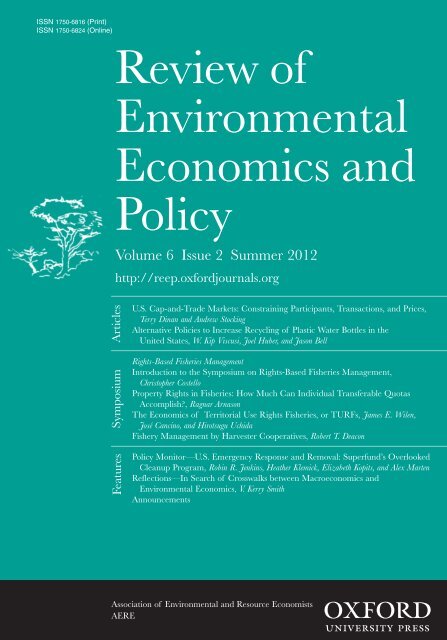Best Practices for Using Hedonic Property Value Models to Measure Willingness to Pay for Environmental Quality
IF 6.6
3区 经济学
Q1 ECONOMICS
引用次数: 65
Abstract
The hedonic property-value model has been refined over more than forty years to become one of the premier approaches to valuing environmental amenities. This article presents best practices for hedonic property-value modeling when the goal is to measure households’ willingness to pay (WTP) for a change in a spatially varying amenity. The starting point is a research design that identifies a source of exogenous variation in an amenity that is observable by prospective buyers (e.g., air quality). Data on the sales prices and physical attributes of houses, together with location-specific measures for amenities, are then used to estimate a housing-price function. Under ideal conditions, the derivative of this price function can be interpreted as indicating the amenity’s implicit price, which can then be used to calculate household marginal WTP for the amenity. In principle, this process is straightforward. In practice, modeling decisions must be made to define variables that measure sale prices and amenities and to select an econometric specification. Although the number of issues to address when developing a “best practices” study may seem daunting, the effort is both worthwhile and important for developing accurate measures of the WTP for environmental quality.使用享乐财产价值模型衡量环境质量支付意愿的最佳实践
享乐财产价值模型已经经过了四十多年的改进,成为评估环境便利设施的主要方法之一。本文介绍了享乐属性价值建模的最佳实践,其目标是衡量家庭为改变空间变化的舒适设施而支付的意愿。出发点是一项研究设计,确定潜在买家(例如,空气质量)可观察到的便利设施的外生变化来源。然后,使用有关房屋销售价格和物理属性的数据以及特定地点的便利设施措施来估计房价函数。在理想条件下,这个价格函数的导数可以被解释为表明舒适设施的隐含价格,然后可以用它来计算家庭边际WTP。原则上,这个过程是直截了当的。在实践中,必须做出建模决策来定义衡量销售价格和便利设施的变量,并选择计量经济学规范。虽然在制定“最佳做法”研究时需要解决的问题数量似乎令人望而生畏,但对于制定WTP对环境质量的准确衡量标准,这项工作是值得的,也是重要的。
本文章由计算机程序翻译,如有差异,请以英文原文为准。
求助全文
约1分钟内获得全文
求助全文
来源期刊
CiteScore
10.80
自引率
0.00%
发文量
25
期刊介绍:
The Review of Environmental Economics and Policy fills the gap between traditional academic journals and the general interest press by providing a widely accessible yet scholarly source for the latest thinking on environmental economics and related policy. The Review publishes symposia, articles, and regular features that contribute to one or more of the following goals: •to identify and synthesize lessons learned from recent and ongoing environmental economics research; •to provide economic analysis of environmental policy issues; •to promote the sharing of ideas and perspectives among the various sub-fields of environmental economics;

 求助内容:
求助内容: 应助结果提醒方式:
应助结果提醒方式:


